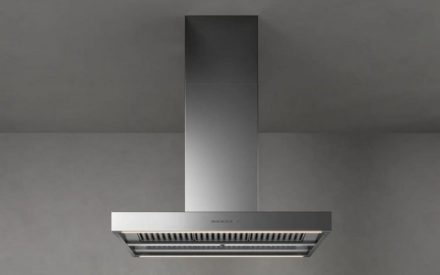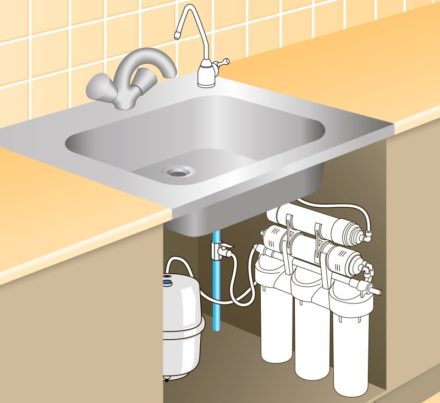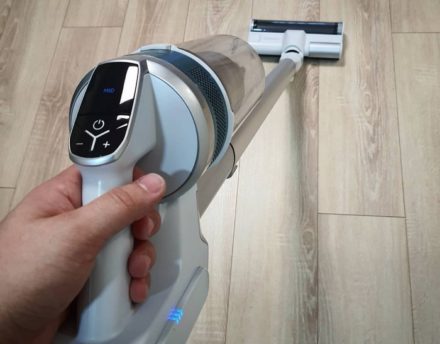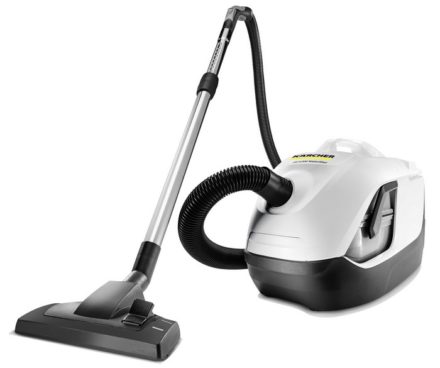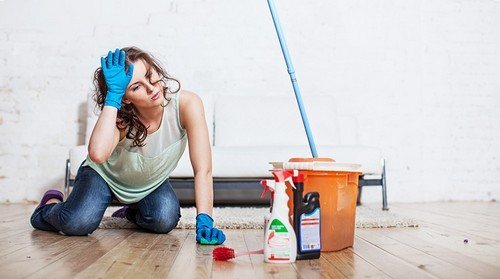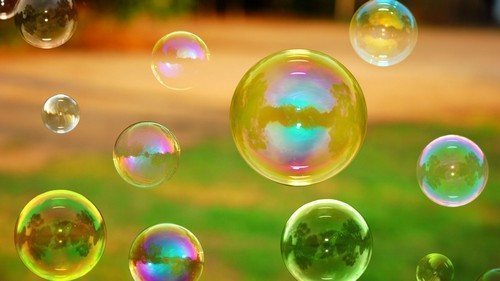Many people keep fish in an aquarium at home. It's interesting to watch them. In order for the fish to feel good and the owners to enjoy their appearance, it is necessary to regularly clean the aquarium. At first glance, this task does not look difficult, but there are many nuances of proper care.
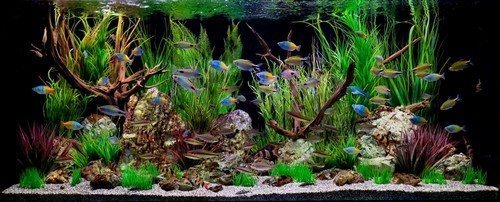
- How to understand when it's time to clean the aquarium
- Frequency of cleaning the aquarium
- Cleaning equipment
- Water
- Glass scraper
- Big bucket
- Water pump
- Components for replacing the filter
- Vinegar
- Blade
- Other necessary things
- Rules for surface cleaning of an aquarium
- Rules for deep cleaning of an aquarium
- Cleaning the walls
- Algae processing
- Cleaning gravel
- Cleaning decorative elements
- Replacing filter cartridges (how to clean the filter in an aquarium)
- Draining water
- Water level restoration
- Cleaning the outside of the aquarium
- Determination of water purity several hours after manipulation
- How to clean an aquarium with a siphon
- Bottom
- Sand
- Priming
- How to clean an aquarium without draining the water
- How to clean large aquariums
- Rules for preparing a new portion of water
- Procedure if it is necessary to catch fish from an aquarium tank
- Features of using aquarium salt
- How to care for salt water aquariums
- Getting rid of pests and excess organic matter, restoring the biobalance of the aquarium
- Biological organisms that clean aquariums
- Snails
- Fish
- Shrimps
- Causes of pathogenic algae growth
- Basic rules for daily aquarium care
How to understand when it's time to clean the aquarium
Several factors indicate that it is time to clean your aquarium. For this purpose, water quality (nitrates, ammonia) is tested. If the readings exceed the norm, it’s time to change the water. When the fish lift up a cloud of dirt as they move, it’s time to wash the soil. The walls of the aquarium are covered with a green coating - this is a signal for washing the glass. Hence the conclusion: cleaning is carried out according to external factors and tests.
Frequency of cleaning the aquarium
It is impossible to give a definite answer about the frequency of cleaning. If you compare large and small aquariums, you often have to clean in smaller containers. Again, it's worth considering the population. If there is a high population density in a large artificial reservoir, and only 3 fish swim in a small one, then cleaning here will be done more often in large containers. From here we can only talk about averaged data:
- Every day you should feed the fish and inspect the equipment and check the temperature.
- Planned cleaning to change water should be carried out once every 7-14 days.
- Clean glass once a week, even if they seem clean.
- Filter maintenance once a month.
- Cleaning the soil, decorations, stones once every 7 days.
- Regularly test water for nitrates, ammonia, phosphorus, and trim vegetation.
- Replenish fluid due to evaporation every 3-4 days.
Cleaning equipment
Every aquarist has a tool that they use for cleaning. Conventionally, it is divided into a standard and an individually specific set.
The first includes the necessary things: sponges, buckets, scrapers, hoses, siphons.
The second set includes additional tools: tweezers, acidity indicator, feeders, aquarium tests.
Water
You can't just take liquid from the tap. It must meet certain parameters, at which the fish will feel comfortable.
The indicator checks the acidity of the pH, the norm is considered to be -7. To increase it, use soda, to decrease it - peat.
The smell of chlorine is excluded. The water is settled for 3 days. If this does not help, use a dechlorinating agent.
It is undesirable to use distilled liquid for freshwater fish, since it is considered "dead" water.
The upper layers of water from old aquariums are recommended, they have an established biological balance.
Glass scraper
In order not to put your hand inside the aquarium while cleaning the glass, it is convenient to use magnetic scrapers. The algae deposit can be cleaned with a scraper that has a metal blade. You just have to be extremely careful not to catch the silicone sealant (the wall connector) or scratch the acrylic.
If you wash the glass regularly, at least once every 7 days, an ordinary kitchen sponge will do. Just use a new one, without any food or grease residue.
Large bucket
When cleaning sand and pebbles from the aquarium, water and debris are drained. Therefore, you need to have a large bucket for collecting.
You will also need a large bucket to settle the water. It is advisable to choose a neutral material - inert plastic, enamel. Exclude all other materials: zinc, aluminum, copper. The reaction of the elements produces harmful substances that cause imbalance and the death of aquatic organisms.
Pump for pumping out waterThe second set includes additional tools: tweezers, acidity indicator, feeders, aquarium tests.
Water
You can't just draw liquid from the tap. It must meet certain parameters at which the fish will feel comfortable.
“Mom, I crumbled a little here”: how to clean the keyboard from small dirt
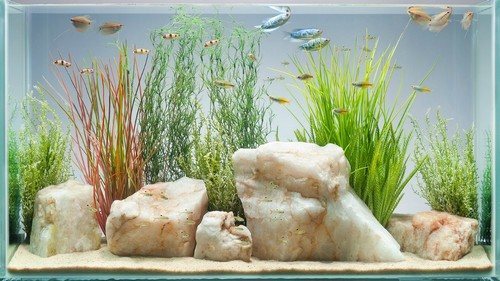
The indicator is used to check the pH acidity, the norm is considered to be 7. Soda is used to increase it, and peat is used to decrease it.
The smell of chlorine is eliminated. The water is left to stand for 3 days. If this does not help, use a dechlorinating agent.
- For freshwater fish, it is not advisable to use distilled liquid, as it is considered “dead” water.
- The upper layers of water from old aquariums are recommended; they have an established biological balance.
- Glass scraper
- To avoid putting your hand in while cleaning the glass inside the aquarium, it is convenient to use magnetic scrapers.
- Algae deposits can be cleaned with a scraper that has a metal blade. You just have to be extremely careful not to snag the silicone sealant (wall connector) or scratch the acrylic.
- If you wash your glass regularly, at least once every 7 days, an ordinary kitchen sponge will do. You just need to use a new copy, without any leftover food or fat.
Big bucket
When cleaning sand and pebbles from the aquarium, water and debris are drained. Therefore, you need to have a large bucket for collection.
You will also need a large bucket to settle the water. It is advisable to choose a neutral material - inert plastic, enamel. All other materials: zinc, aluminum, copper exclude. The reaction of elements produces harmful substances that cause imbalance and death of aquatic organisms.
Water pump
Among the tools there should be a pump. You can use a siphon-type pumping device.
The pump cannot be used on batteries.
Components for replacing the filter
- Be prepared for the fact that you will need to replace some filter elements. Therefore there should be:
- spare sponges;
- coal packs;
- rings;
- balloons;
- rotary head;
- cartridges.
Vinegar
A special aquarium glass cleaner will help remove limescale from the glass, but if you don’t have it on hand, use wine vinegar. Take a glass of water, add a tablespoon of vinegar. Treat the glass with the solution. The acid does not leave streaks and quickly removes plaque.
Blade
- Some scrapers have a blade. The material can be plastic, metal. When working with scrapers, you need to be careful; for example, acrylic aquariums are easily scratched.
- Some models of scrapers have a combined filling. The blade is replaced with a sponge and vice versa.
- Other necessary things
- When cleaning the aquarium you will need no less necessary things:
- nets of different sizes;
- long tweezers for planting plants and lifting various parts from the bottom;
- siphon;
- feeders;
measuring container for liquid;
syringe, long needle for processing algae.
The necessary substitutes should be in stock: thermometer, heater, compressor. In case of failure of the main elements.
Rules for surface cleaning of an aquarium
When carrying out routine or superficial cleaning of the aquarium, adhere to some rules and procedures:
disconnect electrical appliances from the network. Leave external filters;
clean plaque from glass with a scraper or sponge;
If the decorations are covered with plaque, take them out and rinse with hot water.Use any detergent, but rinse thoroughly;
trim living plants, do weeding;
siphon the soil as necessary;
drain the water (if you are cleaning the bottom, this will be done automatically);
rinse the filter as necessary;
fill with clean water.
Professional tips for cleaning the house that we received from cleaning service workers
After the water has settled, brush over the decorations and shake off the residue.
Rules for deep cleaning of an aquarium
Deep cleaning involves completely restarting the aquarium. Such actions are caused by the death of fish, plant disease, the structure has leaked, or the design is boring.
The algorithm of work is the same as during scheduled cleaning. The only differences are total disinfection.
Prepare a house for the fish. If aquarium water is suitable, dial. During an epidemic, this should not be done; prepare settled water for several days and heat it before settling.
Take out the plants. It is important not to damage the root system. If disease occurs, plant new samples. If they are dear to you, treat them with penicillin. Combine 10 liters of water, 50 mg of the drug. The course of treatment is seven days. Maintain the temperature at 25 degrees.
Then, pull out the soil. Perform heat treatment.
Prepare a salty solution for decoration.
Leave 50% of the water from the aquarium for a quick restart, if the cause is not an infection, a virus.
Start cleaning the aquarium.
Use disinfectants.
For mycobacteriosis, fill the container with washing powder at the rate of 400 g of mixture per 60 liters of water. The inventory is all boiling.
Dry the aquarium for several days, at least a day.
Carry out the steps in reverse order.
Cleaning the walls
- Before removing the walls of the aquarium, arm yourself with the necessary scraper. Avoid using used kitchen sponges.
- Proceed carefully, near the bottom. Sand rising from the bottom will scratch the glass.
- Do not remove algae washed off the walls. The fish will eat some of it; you will remove the rest when changing the liquid.
Algae processing
Treat algae with special preparations, for example, Easy Clean, Algaecide or Sidex.
Easy Clean – pour the product into the aquarium. It is relevant without living vegetation.
Algaecide or sidex – kills algae and stimulates plant growth. For 50 liters of liquid, add 2 mg of the drug.
Treat the affected surfaces with a syringe. Dead algae will be eaten by algae eaters.
Cleaning gravel
The soil is covered with excrement and food debris. Use a siphon or hose to stir the surface; the impurities will rise up the tube.
When deep cleaning, the gravel is pulled out and washed with detergent.
Tips for cleaning up broken glass: collecting shards without injury or scratches
- Cleaning decorative elements
- Artificial plants and decorative elements are washed inside and outside the aquarium. In the first option, clean off deposits with a brush. If this does not help, remove the decorations and process them in the following ways:
- add boiling water and lower the decorative elements, keep for 10-15 minutes. High temperature will help get rid of algae;
- bleach. Combine water and bleach in a ratio of 9:1. Lower the decorations, hold for 10 minutes. Wash thoroughly under running water.Not all elements can be cleaned in this way, for example, artificial driftwood, corals;
iodized salt + lemon. Prepare a paste of two ingredients. Apply the mixture with a toothbrush. The method is suitable for silk decorations.
After processing, put everything in its place.
Replacing filter cartridges (how to clean the filter in an aquarium)
Filter sponges perform two functions: they purify liquid and accumulate beneficial microorganisms. Do not disturb the balance, carefully remove mechanical impurities. Use liquid only from the aquarium.
The internal filter is replaced when it becomes dirty. The replacement signal is poor water flow, loss of shape. This happens once a year or more. In the internal filter, the sponge consists of several parts. Change only one. After two weeks, when the clean sponge is filled with microorganisms, replace the next part.
Elements made of porous material: rings, balls, change once every 3 months.
Wash the rotor head with a cotton swab. Do not use detergents.
Draining water
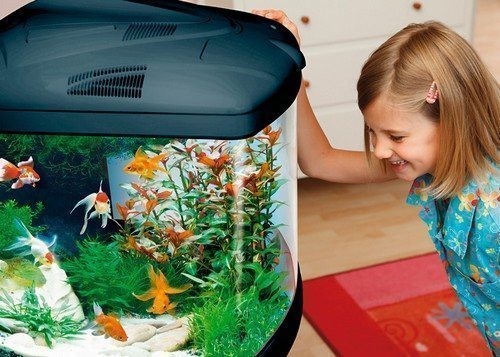
Use a siphon or hose to drain the water. Combine the descent with cleaning the bottom and soil. Lower the tube deeper to remove contaminated areas. Collect the contents in a bucket. If the vessel is filled with large fish, feel free to lower the other end of the hose into the sewer. Provided that the soil is pebbles.
Water replacement is done partially from 15 to 50%. It depends on some factors:
filter power;
presence of plants;
the size of the fish and the craving for clean water.
A complete replacement of water is required in extreme cases - an epidemic.
Water level restoration
Pour in liquid by drip. But before this they stand and bring it to temperature in the aquarium. A saucer is placed on the surface of the soil.Water is slowly poured from a watering can or hose. Once in the saucer, the liquid does not erode the soil.
After filling, turn on the filter and the rest of the equipment.
Cleaning the outside of the aquarium
Wet a sponge with soapy water and wash the outside of the glass to remove drops and fingerprints. Then, rinse with a damp and dry cloth.
Determination of water purity several hours after manipulation
To correctly determine water parameters, test for the presence of nitrates. For fish that love clean water, the indicator is 5-20 mg/l. For undemanding specimens, it is enough to withstand 20-30 mg/l.
How to clean an aquarium with a siphon
The components of a siphon are a pump and a tube. One part is lowered into the aquarium. Using a pump, they suck out the dirt. To do this, place a tip on the tube, shaking the soil, and selecting the waste.
Fighting limescale: 7 tips for cleaning plumbing fixtures from annoying “water spots”
Bottom
Lower the end of the siphon with a special nozzle deep into the aquarium and slightly lift the soil. By pressing the pump, debris from the bottom will flow out through the tube, and the remaining soil will sink. Do not touch areas with plants so as not to disturb the root system.
Sand
Otherwise, the sand is cleaned. A hose is used here. Lower one end to the sand, the other end into the bucket. When collecting increment from the surface, sand gets in. After cleaning, rinse it under running water and return it to the aquarium.
Priming
- Living plants do not grow without a substrate. Therefore, the bottom is covered with a layer of soil. The next layer is sand or pebbles. The soil is cleaned during general cleaning. The substrate is heat treated or changed.
- If the plants are decorative, the soil means sand, quartz, pebbles.Clean once a week with a hose or siphon.
- How to clean an aquarium without draining the water
If you use a net to clean the aquarium, the water will remain at the same level. Place the tool in the sand. It will successfully sift and fall out, and the contaminants will be in the net.
The walls are washed with water from the aquarium using a magnetic scraper.
Decorative elements are pulled out and washed.
How to clean large aquariums
- Large structures are cleaned in the same way as small containers. If the soil is pebbly, use a siphon, sand - a hose.
- Rules for preparing a new portion of water
- The water used for the additive is settled. The temperature is maintained at the same temperature as the drain fluid. Add by drops so that the water is saturated with oxygen and, upon impact, saturates the upper surface with moisture.
- Procedure if it is necessary to catch fish from an aquarium tank
- To catch fish, prepare a trap yourself. Take a plastic bottle and cut off the neck. Using a hot nail, make holes all over the surface so that the product sinks. Place a weight and fish food in the middle. Turn the neck over inside the bottle. Thread a rope through the holes to lift the trap. Place the product in the aquarium and wait for the catch.
- Features of using aquarium salt
- Sea salt, unsuitable for food, has found use in aquariums. Problems related to fish health can be solved with salt:
during transportation;
the effect of salt affects osmoregulation.
Salt changes the quality of water.
- How to care for salt water aquariums
- To prepare sea water, distilled or double purified liquid is used. Simply standing up will not be enough.
- Care:
- measure parameters every day;
- using pumps to simulate flow;
- partially change the water weekly;
- Clean the walls once a week;
monitor equipment;
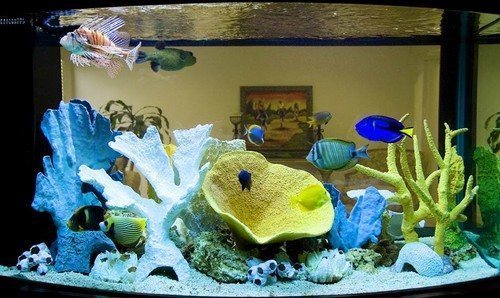
regularly test water quality;
Clean weekly from food debris and excrement.
“Am I the sweetest in the world”: how to wash a mirror until it shines
Works globally are no different from a freshwater aquarium.
Getting rid of pests and excess organic matter, restoring the biobalance of the aquarium
Beneficial microelements and harmful algae develop in the vessel. Biobalance is required. In case of deviation, various methods are used:
launching cleaners (snails, shrimps, fish);
mechanical cleaning;
reducing daylight hours to 8 hours;
adjusting the number of fish;
- vessel restart;
- artificial and living Sera filters;
- purchased preparations to combat algae.
- Before using any method, identify the cause of the imbalance in biobalance.
- Biological organisms that clean aquariums
- Toxic products (excrement, leftover food, plant waste) are neutralized and broken down by beneficial bacteria into a form suitable for plant nutrition.
Bacterial waste products are absorbed by filters or removed by water changes.
Plants purify water, absorb carbon dioxide, and release oxygen. Floating plants are considered the most active.
Among biological organisms, mollusks stand out. They convert calcium into an insoluble state, bring food residues to the desired consistency, and bacteria can easily process them in the future.
Amoebas prefer to feed on algae and organic debris. This gives food to bacteria.
The appearance of bryozoans in the vessel indicates a favorable balance.Since they live only in clean water with a sufficient dose of oxygen.
- All flora and fauna participate in the biological balance of the aquarium, but their importance is unequal.
- Snails
- Active algae fighters among snails:
Helena;
Corbicula java;
Zebra;
- Black ear;
- Hedgehog;
- Porcelain septaria.
- The temperature is in the range of 22-27 degrees.
Snails do not reproduce in a vessel, except for the “black ear” species. Caviar can be seen on the walls of the glass.
The horned snail Neritina Gliton lives among the fish for up to 5 years. The uniqueness of the species is its miniature size of 1-1.5 cm.
Fish
- Cleaner fish benefit freshwater aquariums by:
- Siamese algae eaters;
- otocinclus;
Ancistrus.
The main food of fish is algae. Content temperature is 23-26 degrees.
- Shrimps
- Shrimp are popular among aquarists:
- Amano;
- Crystal;


